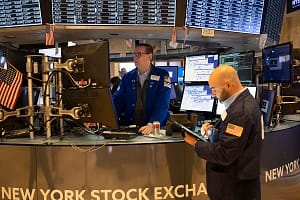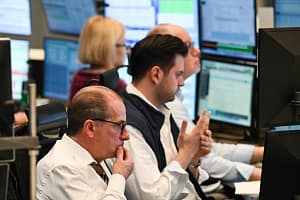U.S. equities climbed for the second consecutive week, led by the Russell 2000 Index, which rose 3.19%.
The Nasdaq Composite added 2.18%, and the Dow Jones Industrial Average gained 1.17%, contributing to a broader upward trend across all major indexes.
Technology stocks outperformed, buoyed by positive momentum in AI-driven earnings and news of Meta Platforms’ 20-year energy deal with Constellation Energy to support its AI operations.
Economic sentiment was shaped significantly by labor market data.
The May nonfarm payrolls report showed the economy added 139,000 jobs, which was slightly down from April but better than anticipated.
The unemployment rate remained steady at 4.2%. While data from ADP and jobless claims hinted at weakness, the overall report suggested a slower-than-feared cooling in labor demand, lifting both stock prices and Treasury yields on Friday.
Other economic indicators showed mixed results. Manufacturing activity contracted for the third consecutive month, with the ISM Manufacturing PMI falling to 48.5%, while services activity unexpectedly slipped into contraction territory at 49.9% its first decline in nearly a year.
Both sectors showed stubbornly high price indexes, raising inflation concerns. Notably, new orders and import levels declined, a possible sign of weakening demand and ongoing trade disruption from global tariffs.
In the bond market, Treasury yields ticked higher following the jobs report. Municipal bonds slightly weakened amid high issuance, while investment-grade corporate bonds were well supported, with new offers largely oversubscribed.
Europe: ECB cuts rates as economy surprises on the upside
European markets rose modestly, with the pan-European STOXX Europe 600 Index ending the week 0.90% higher. National indexes followed suit: Germany’s DAX and Italy’s FTSE MIB both increased by 1.28%, while France’s CAC 40 and the UK’s FTSE 100 gained 0.68% and 0.75%, respectively. Investors welcomed slower inflation and solid economic growth, as well as a long-anticipated interest rate cut by the European Central Bank (ECB).
The ECB reduced its deposit rate by 25 basis points to 2%, citing slowing inflation and the need to support growth amid global trade uncertainties. ECB President Christine Lagarde signaled that the current monetary policy cycle is nearing its end, although future rate decisions will remain data dependent.
In macroeconomic news, eurozone GDP growth was revised upward to 0.6% for Q1 — the fastest since late 2022 — thanks to strong output in Ireland and improved figures from Germany. Inflation dipped below the ECB’s 2% target in May, with core inflation also easing to 2.3%.
Still, industrial activity offered reasons for caution. German and French industrial production both contracted by 1.4% in April, dragged down by weaker exports and lower manufacturing output. However, German factory orders unexpectedly rose, offering a glimmer of hope that domestic demand might cushion broader industrial weakness.
In the UK, Bank of England Governor Andrew Bailey reiterated that interest rates are likely to come down over time, although the exact path remains highly uncertain. His comments suggest the BoE may take a more cautious approach compared to the ECB in the near term.
Asia and emerging markets: China stimulates, Japan pauses, trade talks loom
In Asia, markets painted a mixed picture. Japanese equities declined, with the Nikkei 225 down 0.59% and the TOPIX falling 1.15%, amid uncertain progress in U.S.-Japan trade talks. While no formal agreement was reached, discussions are expected to continue at the G7 summit. Japanese economic data disappointed, with household spending declining and real wages falling 1.8% year-on-year in April. The Bank of Japan reiterated its cautiously optimistic outlook and signaled readiness to raise rates if inflation and growth projections continue to hold.
In China, markets moved higher despite weak economic signals. The CSI 300 and Shanghai Composite gained 0.88% and 1.13%, respectively, while Hong Kong’s Hang Seng Index rose 2.16%. Data from the Caixin manufacturing PMI showed the sharpest contraction since 2022, falling to 48.3. Services activity fared slightly better, inching up to 51.1. The weak indicators reinforced expectations that Beijing will expand its stimulus program to counter the drag from renewed U.S. tariffs and softening global demand.
Official PMI readings suggested marginal improvement — manufacturing ticked up to 49.5 and services held near 50 — but remained below expansionary thresholds. With real estate and exports under pressure, China’s central bank has continued to lower key interest rates and reserve requirements. Recent developments in U.S.-China trade negotiations, including a 90-day tariff pause, offered hope that more constructive dialogue may reduce longer-term friction.
As we move into a new week, investors will be watching inflation updates, central bank commentary, and trade negotiations for clues on the next steps for global economic policy.





Leave a Comment